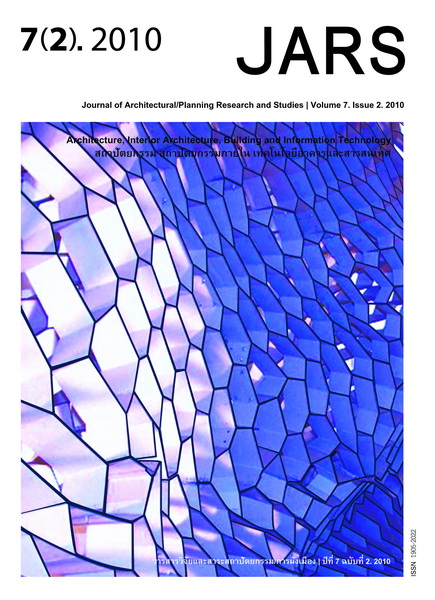Teaching Architectural Design through Character Reading
Main Article Content
Abstract
Teaching the understanding of critical thinking within architectural design education supports
students to develop design thinking and strengthens individual creative design processes. To comprehend
architectural design teaching through critical thinking more effectively, an approach to introduce character
reading as a design methodology was investigated in a second year architectural design studio. Through a
guided process, students were asked to explore distinctive qualities of characters appearing in a novel and
implement them into an architectural design for residential use. The student’s performance was measured by
evaluating their argumentative approach and their final design. As an outcome, most students successfully
showed improved creative and visible development of their designs through character reading and its
implementation as a design methodology. Critical thinking as well as character reading proved to be a
critical in design education and design thinking.
Downloads
Article Details

This work is licensed under a Creative Commons Attribution-NonCommercial-NoDerivatives 4.0 International License.
All material is licensed under the terms of the Creative Commons Attribution 4.0 International (CC-BY-NC-ND 4.0) License, unless otherwise stated. As such, authors are free to share, copy, and redistribute the material in any medium or format. The authors must give appropriate credit, provide a link to the license, and indicate if changes were made. The authors may do so in any reasonable manner, but not in any way that suggests the licensor endorses you or your use. The authors may not use the material for commercial purposes. If the authors remix, transform, or build upon the material, they may not distribute the modified material, unless permission is obtained from JARS. Final, accepted versions of the paper may be posted on third party repositories, provided appropriate acknowledgement to the original source is clearly noted.
References
Boullée, E. L. (1987). Architektur abhandlung ueber die kunst [Architectural treatise on the art]. Zürich: Artemis.
Foundation for Critical Thinking. (2009). Critical thinking: Elements and standards. Retrieved March 20, 2010, from http://www.criticalthinking.org
Goodman, N. (1976). Languages of art: An approach to a theory of symbols (2nd ed.). Cambridge: Hackett Publishing Company.
Herzberger, H. (2000). Space and idea: Lessons in architecture 2. Rotterdam: 010 Publishers.
Kirwin, C. (1995). Reasoning. Oxford: Oxford University Press.
Neufert, E. (2000). Neufert architects data. Oxford, England: Blackwell Publishing.
Nishimoto, T. (1993). PLOT house. GA Houses no. 37, Tokyo: ADA.
Nishimoto, T. (2002). Descriptive programming in contemporary modernism. Proceedings on the ACSA
Northeast Regional Meeting. Montreal: McGill University.
Panin, T. (2007). The practice of critical theory in architectural schools: Twenty first century transformation. Journal for Architectural/Planning Research and Studies, 5(3), 141-148.
Rittel, H. W., & Webber, M. M. (1973). Dilemmas in a general theory of planning. Policy Sciences, 4, 155-169.
School of Architecture and Design (SoA+D), King Mongkut University of Technology Thonburi (KMUTT). (2008). Architecture Program. Retrieved October 25, 2010, from http://www.arch.kmutt.ac.th
Simon, H. (1973). The structure of ill structured problems. Artificial Intelligence, 4, 181-201.
Sumner, W. G. (1940). Folkways: A study of the sociological importance of usages, manners, customs and morals. New York: Ginn & Co.
Ungers, O. M. (2006a). Architektur Lehre [Architecture Education]. Archplus no.179, Aachen: Arch+ Verlag GmbH.
Ungers, O. M. (2006b). Lernen von O. M. Ungers [Learning from O. M. Ungers]. Muehltahler, E. (Ed.), Archplus
no.181/182, Aachen: Arch+ Verlag GmbH.
Vejjajiva, N. (2007). 824. Bangkok: Workpoint Publishing.
Venturi, R. (1977). Complexity and contradiction in architecture. Minneapolis: The Museum of Modern Art.


